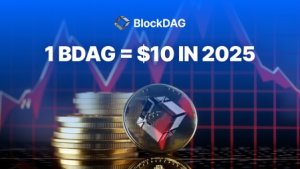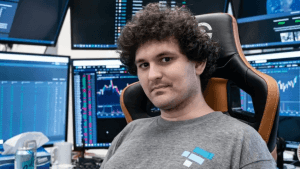America’s massive OTC FX revival and how its stalwarts remain dominant – Op Ed
America’s electronic trading business is gigantic, highly sophisticated and going from strength to strength. The dissenters are now nowhere to be seen as the astute stalwarts remain evergreen. Here is a detailed analysis

Here in North America, a substantial stretch of land connects four major financial centers.
Four major financial centers which are completely different in their commercial ethos, yet absolute specialists in each of their dedicated areas.
Toronto is a dyed-in-the-wool equities and indices center, Yonge Street’s long-established and ultra-conservative trading entities having spent the post-war years trading non-volatile, illiquid corporate assets or with stock market prices displayed firstly in analog format, and now in digital format. Canada’s slow and steady banking sector reflects exactly this line of thinking.
Chicago is home to the listed derivatives sector and the array of institutional exchange and electronic market place technology and connectivity that supports and enables it as the number one city for exchange-traded instruments ranging from raw materials such as corn and hemp to ultra-sophisticated specialist FX and multi-asset commodity platforms such as Trading Technologies, CBOE and Tradovate – all three of which empower the retail trader, at very high net worth level.
New York is the evergreen center of the world’s largest FX firms, with highly capitalized giants including GAIN Capital, FXCM, the technology-led OANDA Corporation and America’s most well capitalized OTC brokerage, Interactive Brokers, demonstrating that a domestic firm with global presence, operated by some of the world’s most astute electronic trading industry professionals, is not only a route to longevity but to dominance.
Boston…. Is that a financial center? No. It has a financial district, but it is not a financial center in the traditional sense. Instead, as the New England winter makes its presence felt via the sound of drops of water hitting my window as I write, Boston has a highly educated talent base of technology and computer science professionals, many of whom emanate from some of the world’s most revered educational institutions such as MIT and Harvard, and just a short distance south in Connecticut, Yale and Stamford Research Institute.
This has given rise to a specialist FinTech sector in Boston which is both innovative and highly institutional at the same time. Nowadays, institutional prime brokerages, integration and technology firms, bridge companies and all-new entities operated by top level industry leaders all reside in Boston.
Bearing in mind that the average North American FX trader has a very high average deposit compared to those in other regions of the world – $6600 compared to $3800 according to research conducted by FinanceFeeds earlier this year, and that retail participants in the exchange listed derivatives sector often are subject to a minimum portfolio size of $50,000 and that American customers often have equity and stock portfolios meaning that despite their quiet and discreet fiscal approach, the entire system is multi-asset due to the level of comprehension by retail traders.
As the previous decade drew to a close, many retail FX firms with their origins outside of the United States began to weigh up the viability of retaining business here.
The result was a wave of exits from the United States at the turn of this decade by major firms including Alpari, FXSolutions, GFT, IBFX, and ILQ to name a few, as well as vast consolidation with FXCM having bought the client bases of various firms, and GAIN Capital acquiring GFT, meaning that in the space of just three years between 2010 and 2013, the approximately 25 retail OTC FX firms that had operated in America became nine.
Now, it is quite simply dominated by just four domestic companies.
At that time, much clamor amassed and it was relatively common to hear conversations by industry executives outside North America as well as those on the retail sales side such as introducing brokers beginning to hail America’s FX business as a dead man walking.
How wrong could this be….
When examining the companies that took the option of leaving the US market post-Dodd Frank Act, they mostly no longer exist anywhere globally. ILQ left the US market with the NFA having administered a $225000 fine and a permanent ban from operating in the Federal United States in July 2014.
One of the main factors which prompted the NFA to probe into the commercial activities of ILQ at the time was that the regulator had serious concerns relating to the corporate structure of the company, as well as the NFA having conducted investigations into the provenance and business activities of a number of the company’s key figures, including the assertion that at the time that the NFA’s investigation began in March 2013, ILQ had approximately 1,300 customer accounts and over $13 million in total customer liabilities.
Nowadays, the firm has a small operation in Australia but is living in the shadows of Invast Global or AxiTrader, both of which have branched into Prime of Prime brokerage, as well as embarked on large scale commercial growth endeavors.
IBFX was banned from the US market in March 2016. The company, which is owned by Japanese giant MONEX Group, was fined $1 million by the CFTC a day before its ban, and OANDA Corporation then acquired its client base that were using the proprietary Tradestation platform – around 2200 traders – and migrated them to OANDA’s fxTrade system.
Previously, IBFX was fined $600,000 as a result of the NFA having found that IBFX used two models to execute its retail FX transactions. One was STP, and the other being a practice known as warehousing.
Warehousing occured whereby IBFX acted as the counterparty for trades whose value was less than the notional volume threshold level lnterbank had established for STP trades. Interbank would aggregate the “warehoused” trades for risk management purposes and earn revenue from the bid/ask spread and from beneficial market moves that the aggregated “warehoused” trades experienced.
For the vast majority of trades, IBFX would warehouse the trades, and for the remainder of trades, IBFX used the STP model, which accounted for a very small percentage of the firm’s trading volume and applied when the contract size was at or over the specific notional volume threshold set by the firm for its warehouse trades.
Under the STP model, after a customer clicked on the bid or offer price, which included lnterbank’s predefined markup, IBFX would fill the customer’s order but only after the firm had filled the offsetting position (contra-fill) with a liquidity provider.
Less than two years later, IBFX sold its MetaTrader 4 client base to FXCM for $4.4 million, before this year leaving the US altogether.
Strength and business ethic in the land of the free
Capitalization and execution are cornerstones of the American FX industry’s pedigree and quite simply, time has shown that those that cannot cut it in America, have been unable to do so throughout their business operations anywhere globally.
It was convenient to blame the inability to operate on over zealous regulation, or a net capital adequacy requirement of $20 million, however the US giants that remain do not find this difficult at all. Even FXCM, which was exposed to a vast and unexpected surge of volatility when the Swiss National Bank removed the 1.20 peg on the EUR CHF pair in January 2015, was not called up on its execution methodology, commercial leadership or capitalization.
Meeting with CEO Drew Niv earlier this year in New York, FinanceFeeds gained perspective on this, with Mr. Niv explaining ““If you look at FXCM today, it is effectively the same company as prior to January 15 2015. Most of our customers stayed, almost all of the staff stayed. We did sell some non-core assets and for a few months we had some losses, however we kept the market share in tact. What many people don’t realize is that we effectively plugged the capital shortfall with Leucadia’s loan.”
In terms of actual impact on the business as a result of attrition, Mr. Niv explained “The customers that we lost were mainly some of the large customers. The total number of our clients that were actually affected by the market volatility that followed the SNB’s decision approximately 3,000 customers which comprised of around 200 here in the United States, and the rest were overseas.
This is a small amount, especially when bearing in mind that some were inactive customers. There were also some customers which stayed with FXCM but deposited less funds because, for example, they were happy to continue trading but would prefer to hold $50,000 in the company rather than $1 million.”
Sales of some of the firm’s non-core assets have been part of FXCM’s policy this year but it is vital to remember that the company remained on an even keel and the firm maintained its responsibilities to all parties, with no dipping into any of its capital resources. Drew Niv, it is clear and well understood, is one of the retail FX industry’s most respected senior executives, and rightly so.
The key here is that America’s commercial structure is highly refined. Its leaders are career professionals who have enthusiasm for continuing to further the cause of what is, even at retail level, a massively institutionalized business.
In Chicago in May, CBOE LIVEVOL senior executive Catherine Clay explained to me that was about to launch a new portal under the name Data Shop, aiming CBOE’s news and feeds at a retail audience, detailing how the new system revolutionizes the method by which all traders can now obtain data, and the top level institutional information is now on its way to the retail trader.
Ms. Clay explained “We are now launching a new market data website called Data Shop where we are offering clients the ability to customize an historical data set or data subscription with an Amazon-like shopping experience. The client can go online, create an account, customize in fine detail, pay for orders and receive an automated instruction on where to collect their data” she enthused. “All orders will be remembered, as will shopping behavior, and therefore it streamlines their shopping experience, in a similar way to how today’s consumers are used to this methodology with e-commerce sites such as Amazon.”
Clever indeed, bringing a very large institutional exchange into the hands of the retail trader.
When interacting with America’s senior level FX industry professionals on both the exchange traded FX side and the OTC side, it is clear that the surge forward technologically and commercially today is in full swing.
Now let’s see if Donald Trump’s plan to repeal the Dodd Frank Act materializes. If it does, it will clear the way in some respects, but due to the extremely self-regulating and comprehensive knowledge and professionalism among US market participants, the structure will remain among the highest in the world.
Follow us during the course of today for live reporting from here in Boston, where the Spirit of America is most certainly alive and well among the electronic trading businesses based here, and to the senior leaders who have been instrumental in building this industry from its origins to shaping its future who are joining us for the FinanceFeeds New York Cup networking event on Thursday, we very much look forward to hosting you and to seeing you there!









